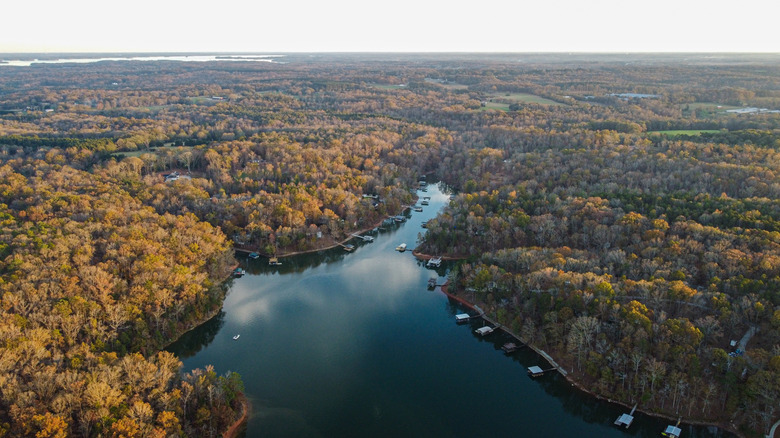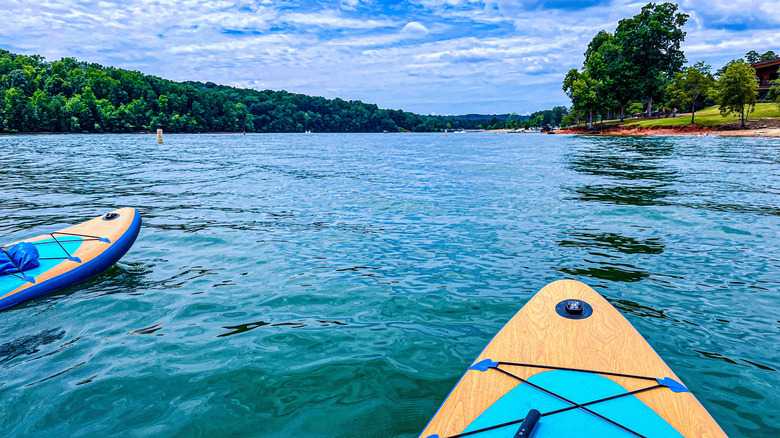The Dangerous Reason Tourists Should Avoid Visiting These Georgia Lakes In The Summer
It's hard to resist Georgia's sprawling lakes in summer, but that's exactly when tourists need to watch their step. A WorldAtlas roundup has ranked the state's most snake-infested lakes, and some popular ones made the cut. While non-venomous water snakes are common, it's venomous species like copperheads and rattlesnakes that are dangerous. And in the summer breeding season, these lakes see upticks in snake activity.
Lake Hartwell is massive — 56,000 acres — but it's also chock full of several snake species, both non-poisonous and extra spicy. The ones to be concerned about are the eastern copperhead and timber rattlesnake. Lake Allatoona in the northwest is essentially a snake soup with at least five species commonly seen. Luckily, only the eastern hognose and eastern garter snakes are mildly venomous, meaning their bites are rarely harmful for humans. The rest are harmless if you leave them alone.
Lake Sinclair in central Georgia is home to the common watersnake. These snakes are great swimmers and quite long, but they're nonvenomous and easy to see. While Lake Lanier made the list, it's not snakes that give it the reputation of the most dangerous lake in America. This human-made reservoir is home to several snake species, including the black rat snake, but none of them are venomous. Ask around, and most native Georgians will tell you to be more worried about drunken behavior and boating accidents at Lanier — or maybe ghosts.
Tips for staying safe in Georgia's snakiest lakes
Don't let snake sightings make you "nope" right out of your summer getaway. There are some hacks for avoiding snakes that can give you peace of mind. First, stay on designated beaches if you get in the water. Always keep an eye on your surroundings, and avoid dusk and dawn swimming, since most snakes are active during cooler hours. If you spot a snake, don't panic. Just back away slowly and give it space. Remember, it's probably more afraid of you than you are of it.
Learn to recognize the copperhead hourglass pattern and rattlesnake's triangular head. Pack a basic first-aid kit, and know where the nearest hospital is — most ERs carry antivenom. Call the Georgia Poison Center if you aren't sure, and keep the bite below your heart. Stay calm — you have about a 499 out of 500 chance of survival (per the Georgia Department of Natural Resources).
If these snake-filled lakes have you coiled more tightly than Samuel L. Jackson mid-flight, there are alternatives. Georgia is filled with state parks hiding waterfalls and swimming holes — and while there's no way to guarantee you won't come across a reptilian surprise (it is nature, after all), it's less likely. For freshwater swimming with a mountain backdrop, Lake Blue Ridge in the Chattahoochee National Forest offers a family-friendly pebble beach and swimming area. There are local kayak and paddleboard rentals and camping areas for longer stays. Coastal escapes like Jekyll or Tybee Island also have stunning beaches with clear waters. And if you'd rather interact with nature in a controlled setting, Georgia has the largest aquarium in the country located right in Atlanta. From there, head to Six Flag's White Water to cool off in a completely snake-free environment.

